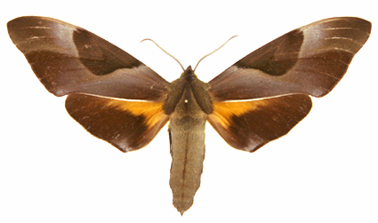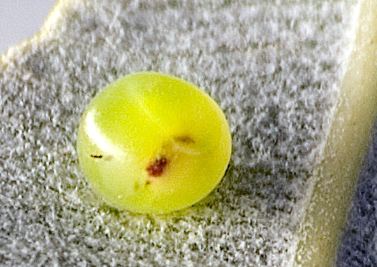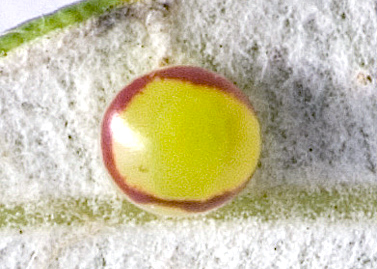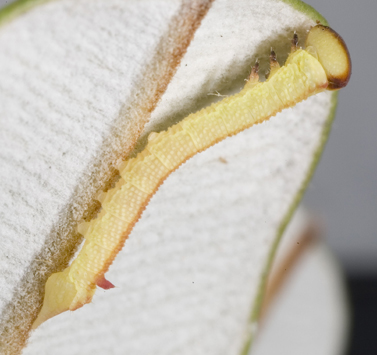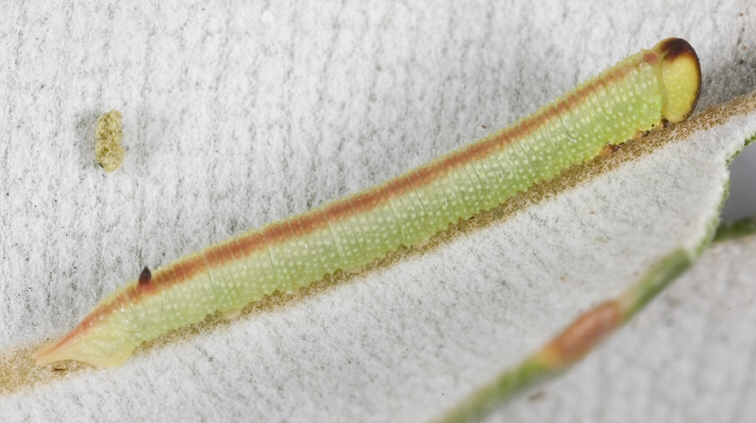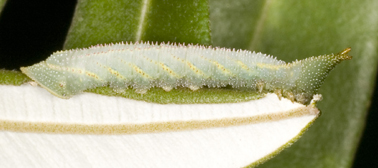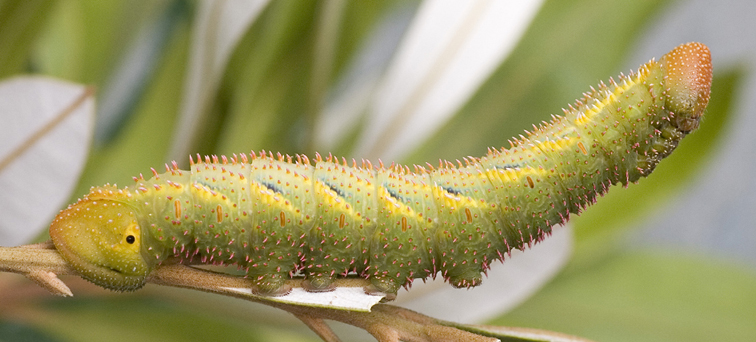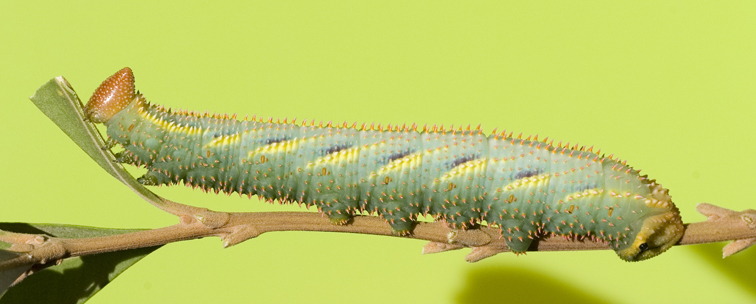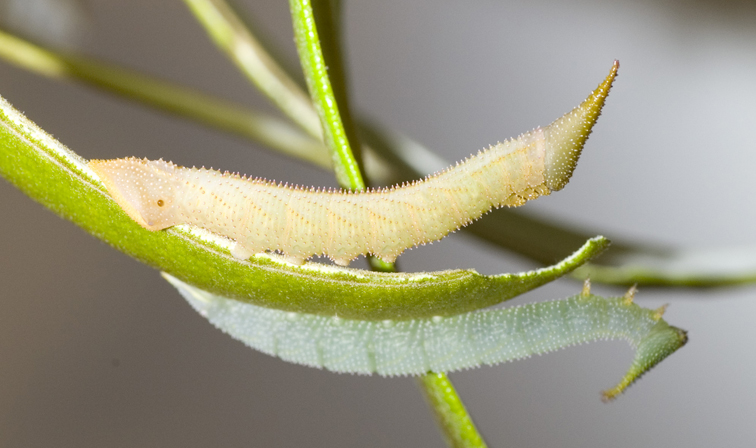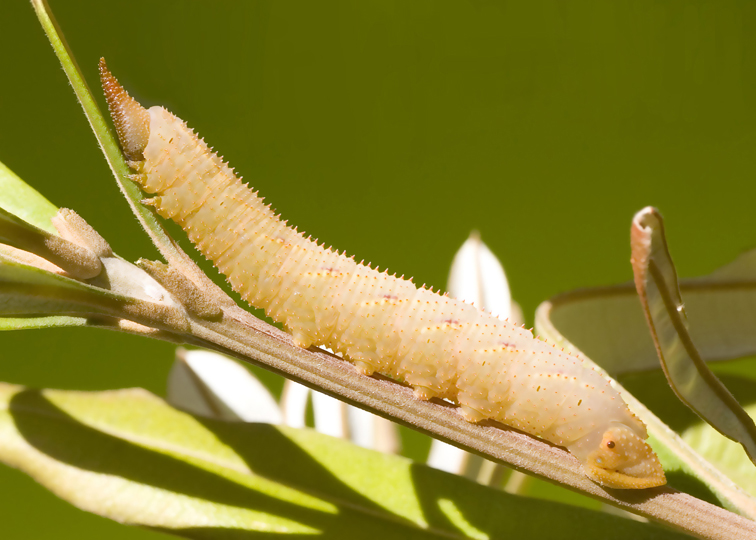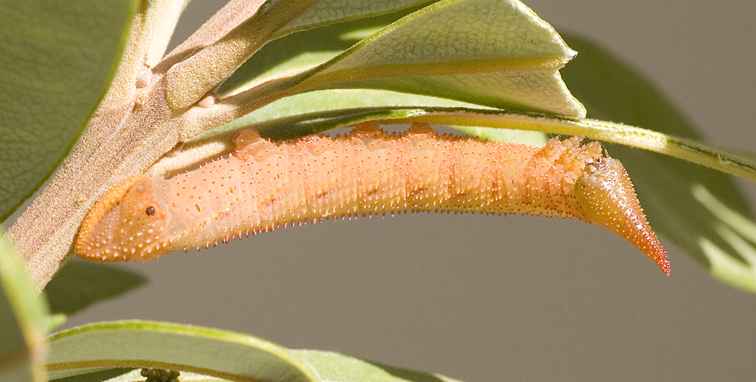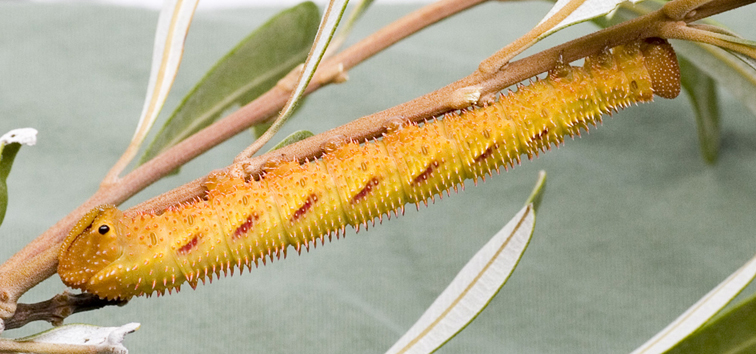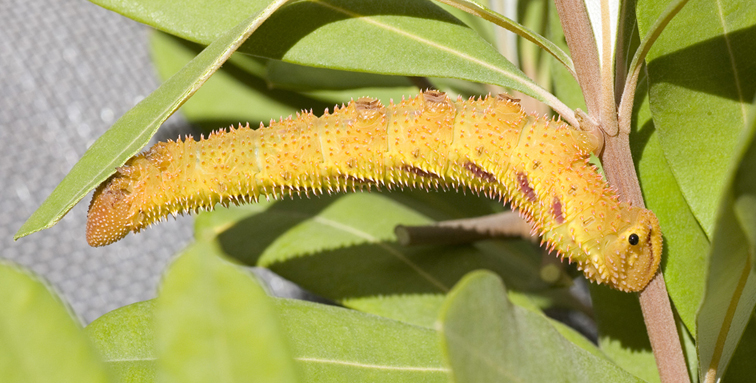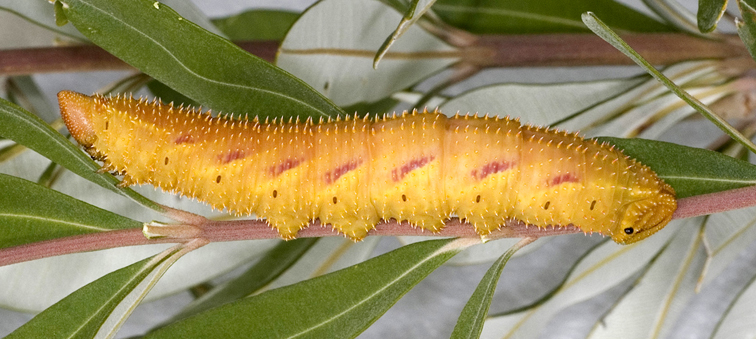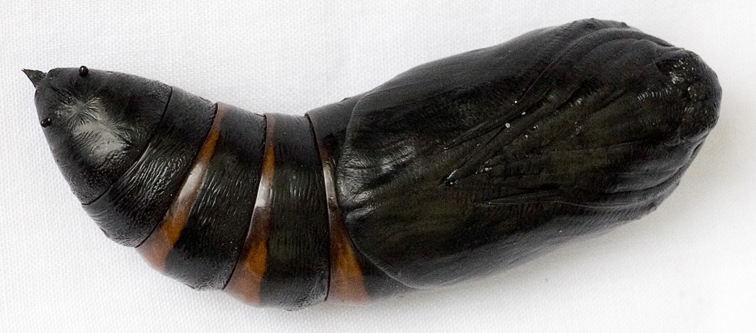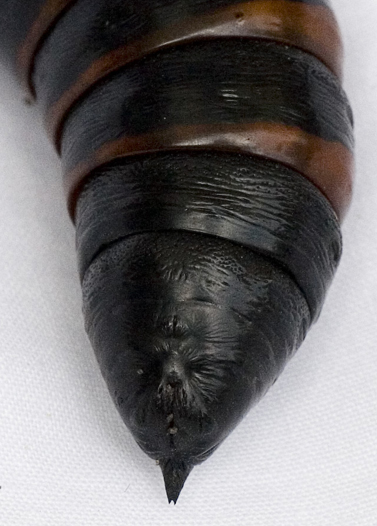|
|||
|
|||
|
< Wingspan: 150 mm > Male -------------------------------------------------------------- |
< Wingspan: 171 mm > Female -------------------------------------------------------------- |
||
|
|
|||
|
My experience with this species is that it starts coming to lights, as soon as it gets dark, but only flying for about an hour and a half. On the northern NSW coast it gets dark about 6pm in April. I kept my lights on till about 10pm, but after 7pm, it stopped coming to my lights. This happened every night I was there on the coast. There are two main colour forms of the larvae, green and yellow (see photos below). They can change colour from green to yellow at any stage and also change back to their original colour. There seems to be two generations on the NSW north coast. Flying from late October into December and again in March into May. Due to cooler weather in winter, the larvae stage last longer for the generation hatching in October/December. C. triangularis larva has 8 instars compared to 5 instars for most other butterfly/moth larvae. The pupa takes about 7 days to form and they hatch after about 5 weeks. |
||
|
------------------------------------------------------------------------ Early Stages:
Ova about 2.5 mm. They can be green or green with a circular red-brown line.
|
----------------------------------------------------------------------------
---------------------------------------------------------------
Larva 20 minutes after hatching, 8mm long. Compared to later instar larvae that don't have the typical hawkmoth horn, they are actually born with a miniature horn. |
||
|
------------------------------------------------------------------------------------------------------------------------
Larva 13 mm ------------------------------------------------------------------------------------------------------------------------
Larva 15 mm ------------------------------------------------------------------------------------------------------------------------
|
|||
|
Larva 30 mm
|
Larva 52 mm |
||
|
-----------------------------------------------------------------------------------------------------------------------------
Larvae 73 mm
This larva was found 11th May 2010 and was then 35 mm. These two photos were taken 9th November 2010. In the past 6 months its only been growing 38 mm. Its been feeding all the time, but is growing at a very slow rate.
------------------------------------------------------------------------------------------------------------------------------
Larva 110 mm -------------------------------------------------------------------------------------------------------------------------------
Yellow form larva 40 mm above a green form larva. -------------------------------------------------------------------------------------------------------------------------------
Yellow form larvae 65 mm
------------------------------------------------------------------------------------------------------------------------------
Yellow form larva 70 mm -------------------------------------------------------------------------------------------------------------------------------
Yellow form larva 90 mm ------------------------------------------------------------------------------------------------------------------------------
Yellow form larva 120 mm -------------------------------------------------------------------------------------------------------------------------------
Yellow form larva 120 mm ready to leave food plant to pupate. They turn dark orange-red (green form too) on their back when fully grown and ready to pupate. Max two days after they got the dark colour on the back, they will leave the food plant. They stay about 1 week in the ground before they pupate.
-------------------------------------------------------------------------------------------------------------------------------
Male pupa ------------------------------------------------------------------------------------------------------------------------------
Female pupa. Note the knob on both sides on last segment. They can both be present or non-present in both male and female pupae. -------------------------------------------------------------------------------------------------------------------------------
Male pupa (left) and female pupa (right). Note the female's knobs on the last segment. They can both be present or non-present in both male and female pupae.
|
|||
|
HOME > THUMBNAIL INDEX > 82. SPHINGIDAE > SMERINTHINAE > Coequosa triangularis
|
|||
|
All rights reserved. No part of this publication may be reproduced (except brief passages for the purpose of a review), stored in a retrieval system or transmitted in any form or by any means, electronic, mechanical, photocopying, recording or otherwise, without the prior written permission of the author. ©Bjørn M. Fjellstad 2006
|
|||

